September 2022. I am spending two days in Champagne, France to explore the lake du Der with a friend. The lake was created in 1974 to protect Paris from the Marn river floods. The lake is famous to welcome tens of thousands of cranes in spring and autumn during their migration. It is also home to a lot of endemic species throughout the year like herons, white-tailed eagle, great egret, and various geese, ducks, loons and grebes.
The surroundings of the lake are a wildlife preserve area where hunting is forbidden (except for wild boars), which creates good conditions for wildlife photography.
While it was a bit early in the year to witness the crane migration we still enjoyed our two days there. We started by exploring the lake and the ponds and had a lot of fun on the first moning watching a grey heron hunting small fishes. While the size its preys was rather small it was always on the look-out and spent half a day in front of us fishing.
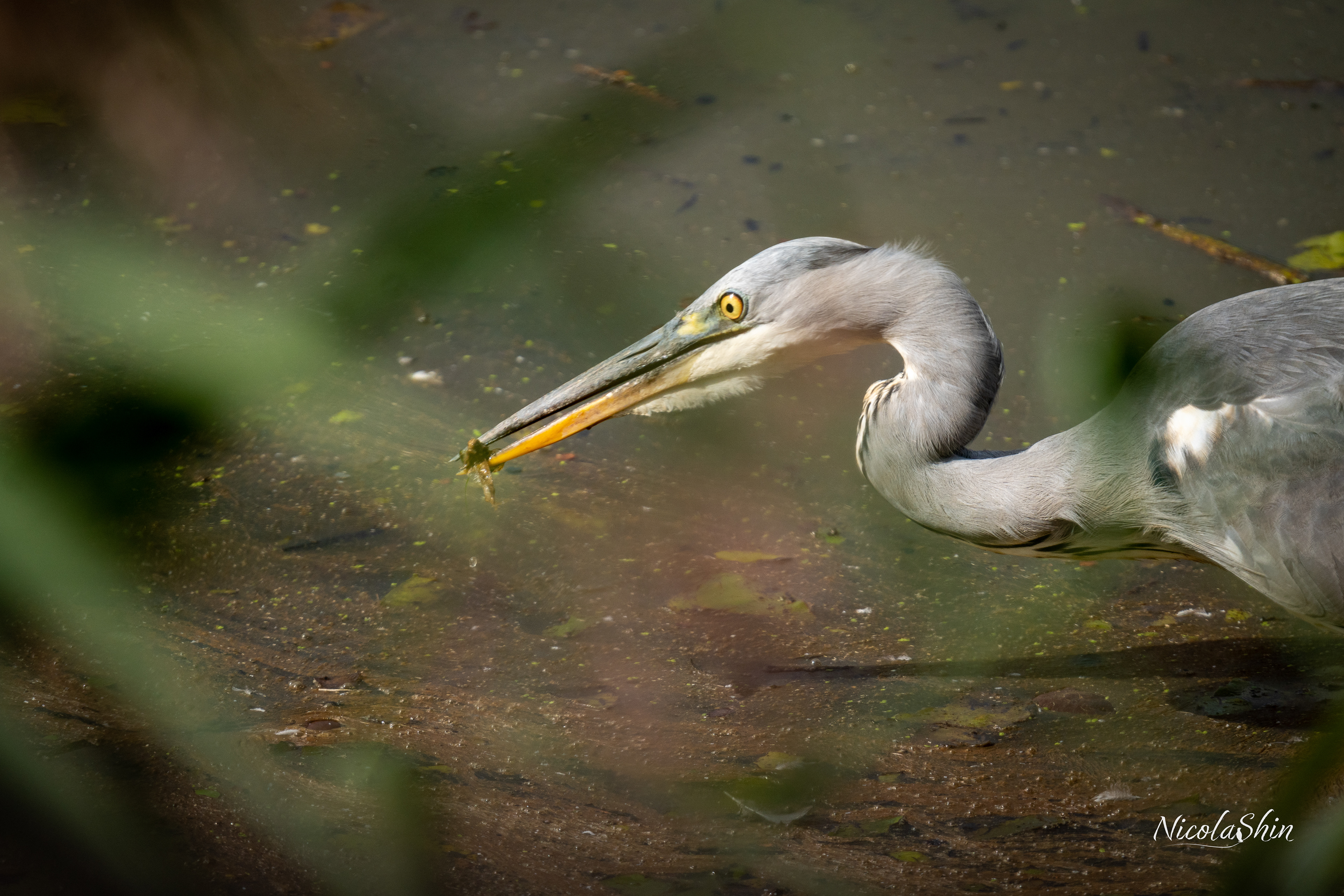

The highlight of the trip was the kingfisher. This magnificent blue lightning spent hours dancing and striking in front of our hide at one of the ponds. It was the territory of a couple, as we saw both of them taking turns on various perches and reeds. The speed at which it dived into the water made it hard to take nice action photographs. However, it also spent long pauses scrutinizing the water from its perches, giving us easier opportunities to shoot.
The success rate of the pair was quite impressive, at around 75-80% over the few hours we watched them. They used two different fishing techniques:
- Starting from a branch or reed, giving them a high vantage point, they would lie in wait to spot prey, at which point they would dive for it.
- Occasionally, the kingfishers would hover in mid-flight (like a hummingbird), keeping their heads motionless while their wings and counterbalancing tails kept them at a height of up to 10 meters above the water. From this distance, they were able to scan the water and locate a target, diving vertically like a dart.
If they were successful, they would fly back to a branch and stun the fish by hitting it against the wood. They would then flip the fish and swallow it headfirst.
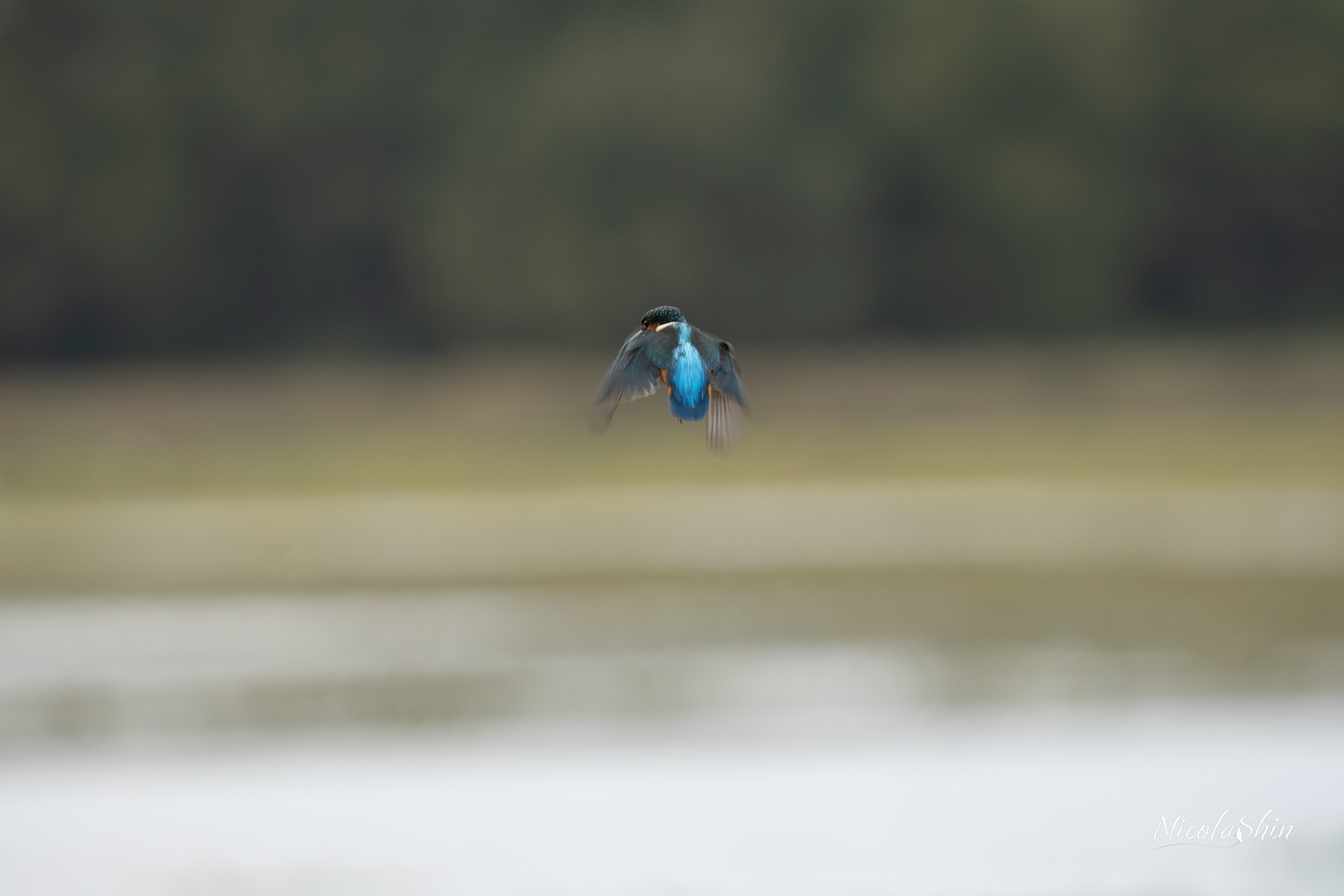


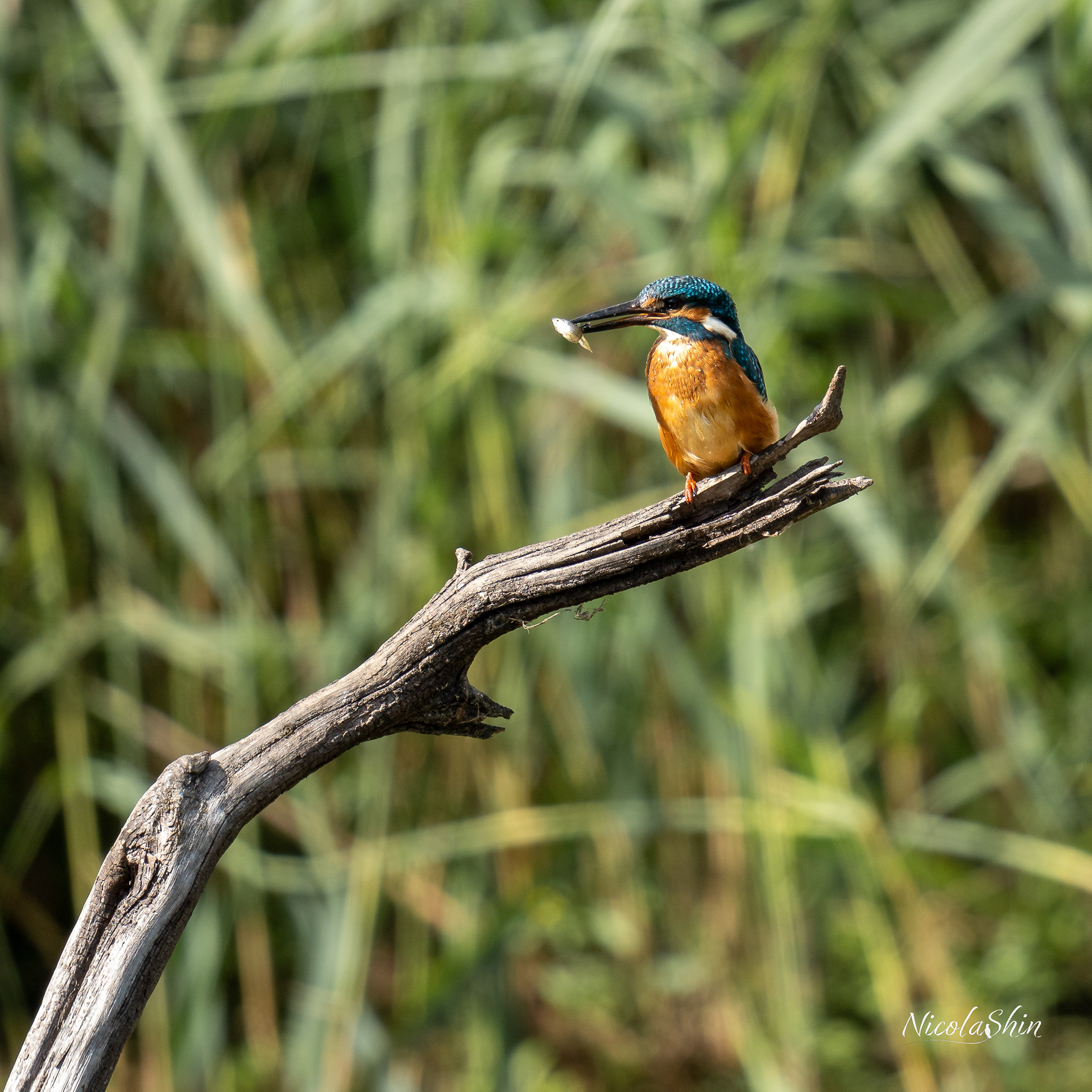
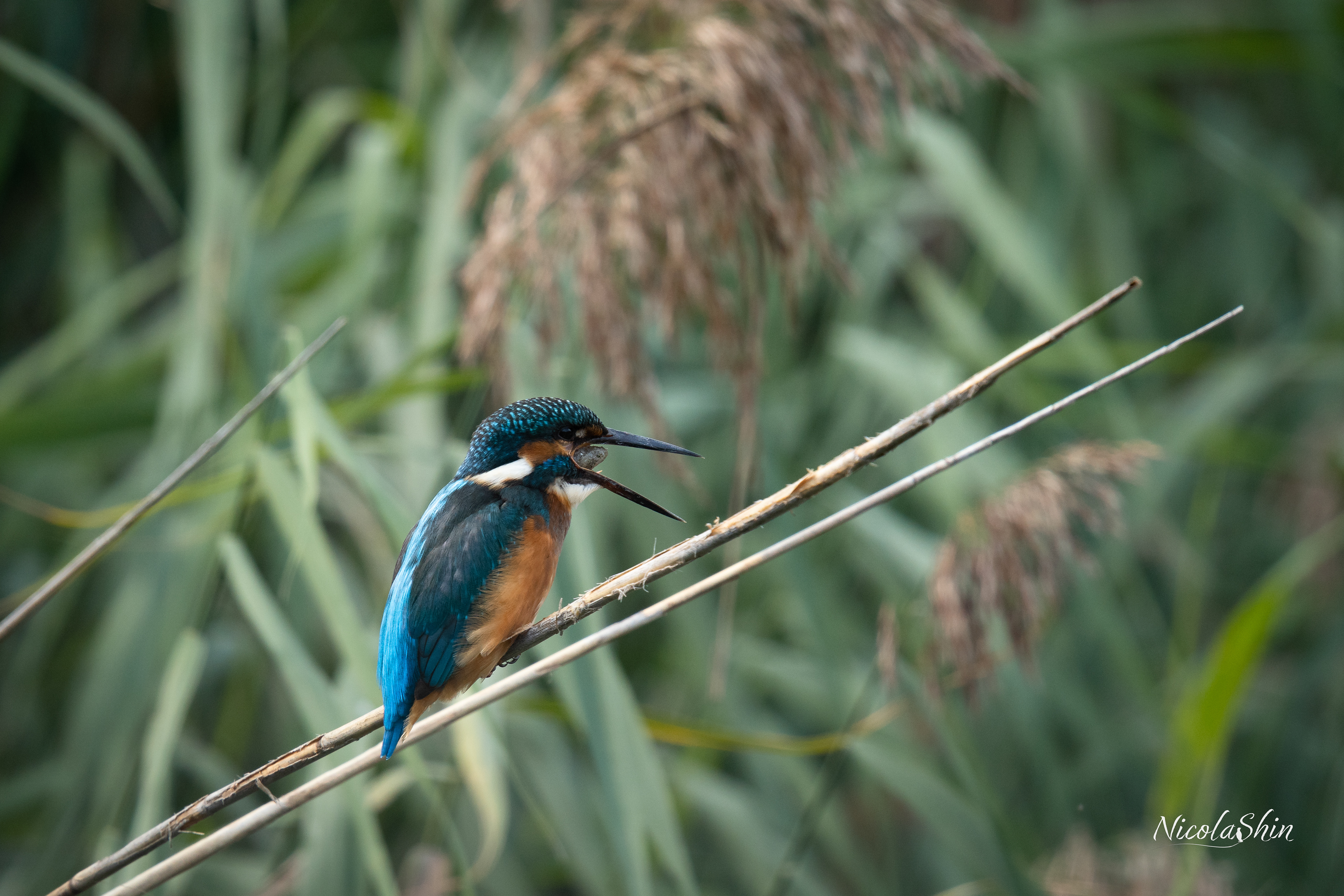
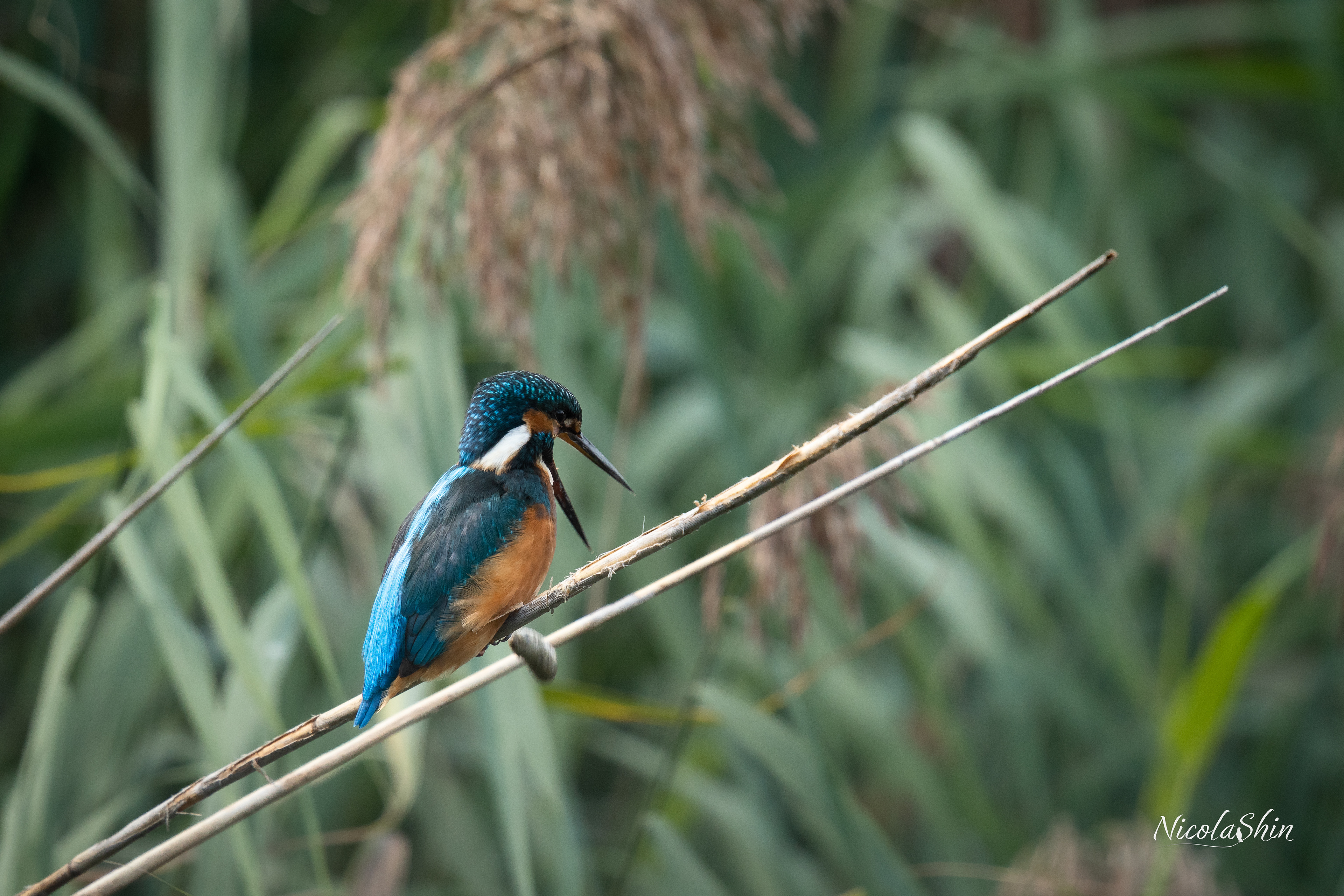
I had the opportunity to capture one of the kingfishers regurgitating a pellet. A pellet is the mass of undigested parts of a bird's food, and in the case of the kingfisher, it consists mainly of fishbones and fish scales. In the picture, you can clearly see the white pellet that the bird is expelling.
Other encounters included a nutria (ragondin) family and roe deer.
As the hunting season had just started, the deer were not too frightened by our presence. One morning, we spotted three deer in a field and decided to try to get closer. A curious young roe deer (probably a male from the year) came quite close to us as we crawled on the grass. Unsure if we were a threat, it stared at us for a couple of minutes before walking into the forest.
As the hunting season had just started, the deer were not too frightened by our presence. One morning, we spotted three deer in a field and decided to try to get closer. A curious young roe deer (probably a male from the year) came quite close to us as we crawled on the grass. Unsure if we were a threat, it stared at us for a couple of minutes before walking into the forest.
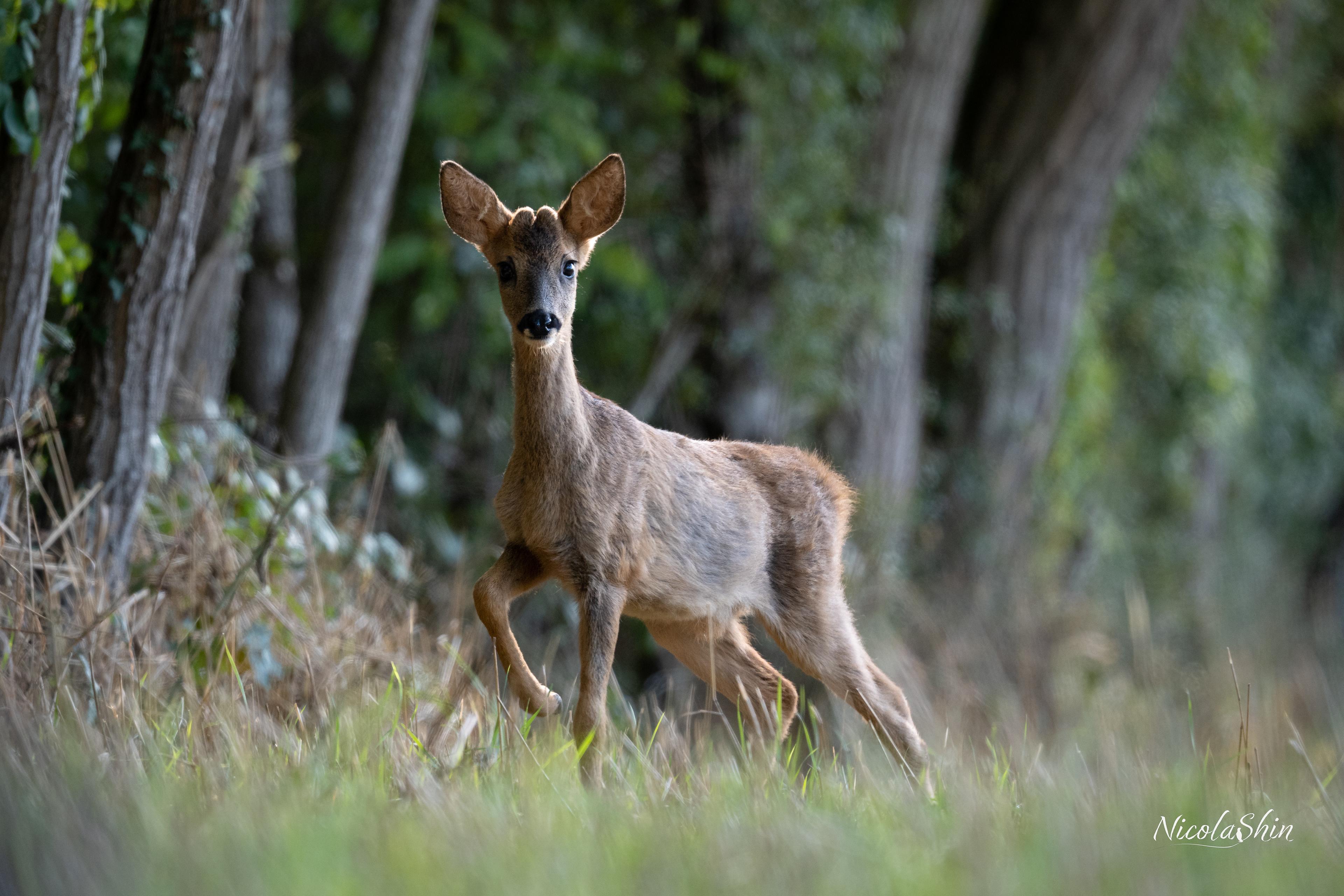
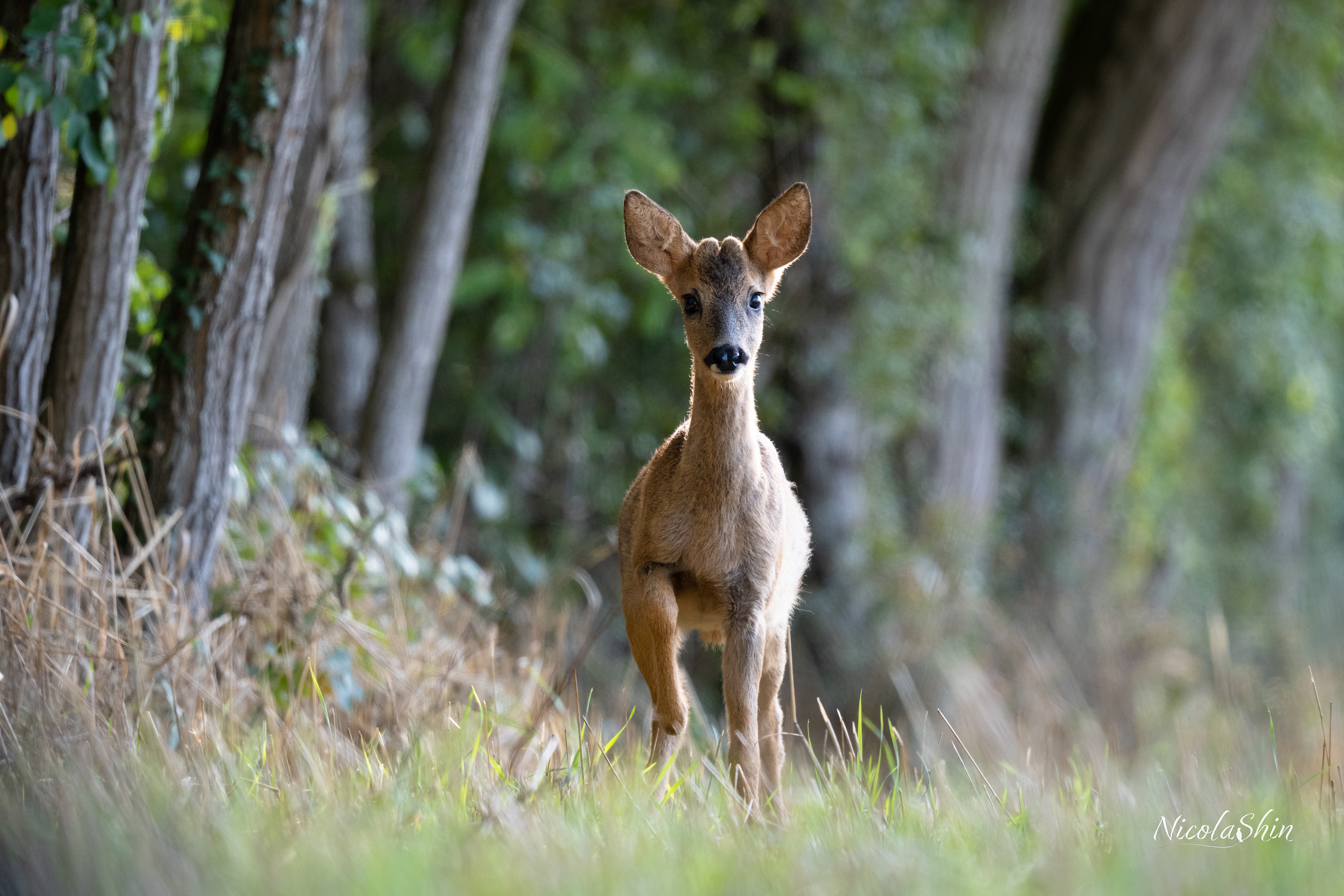
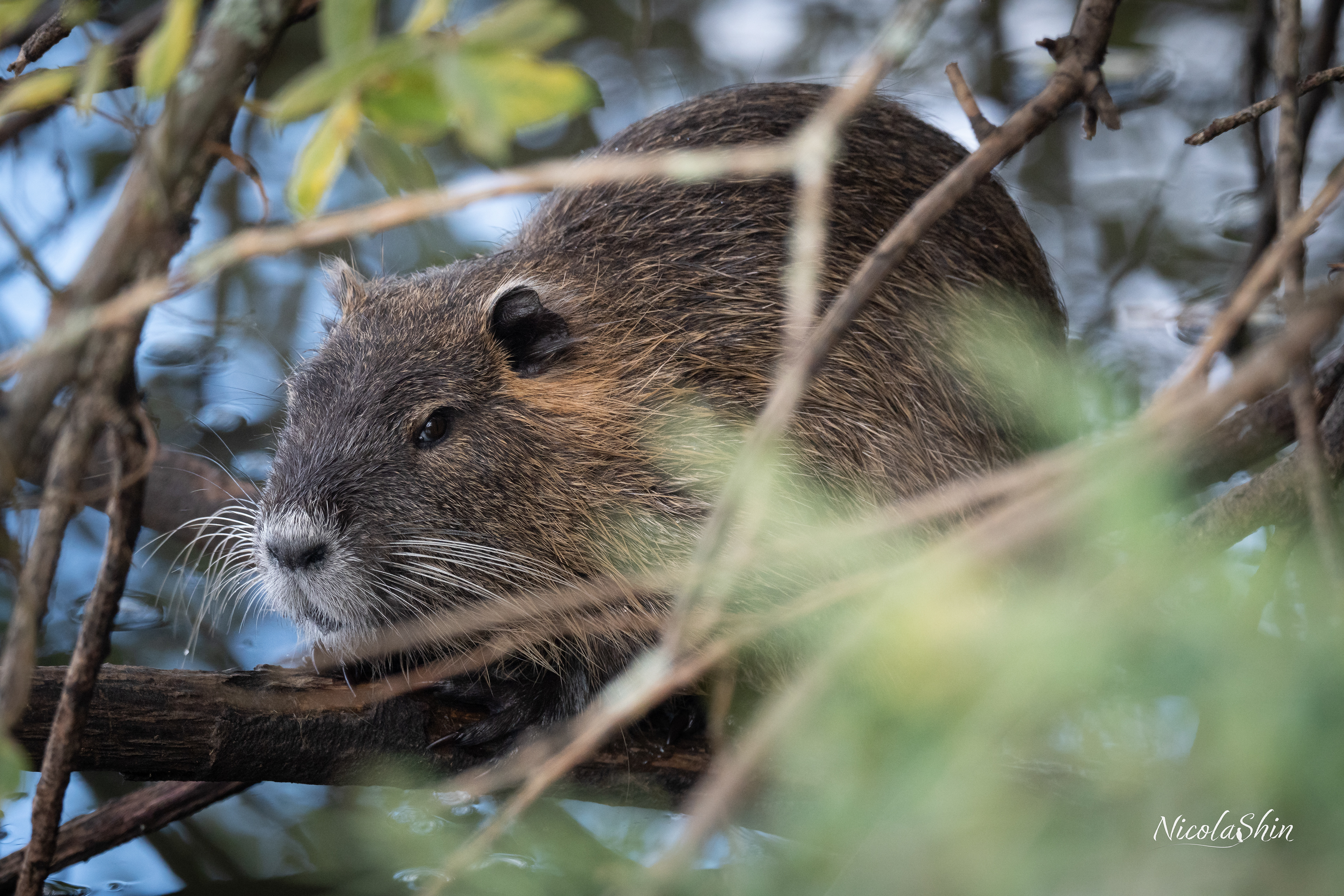
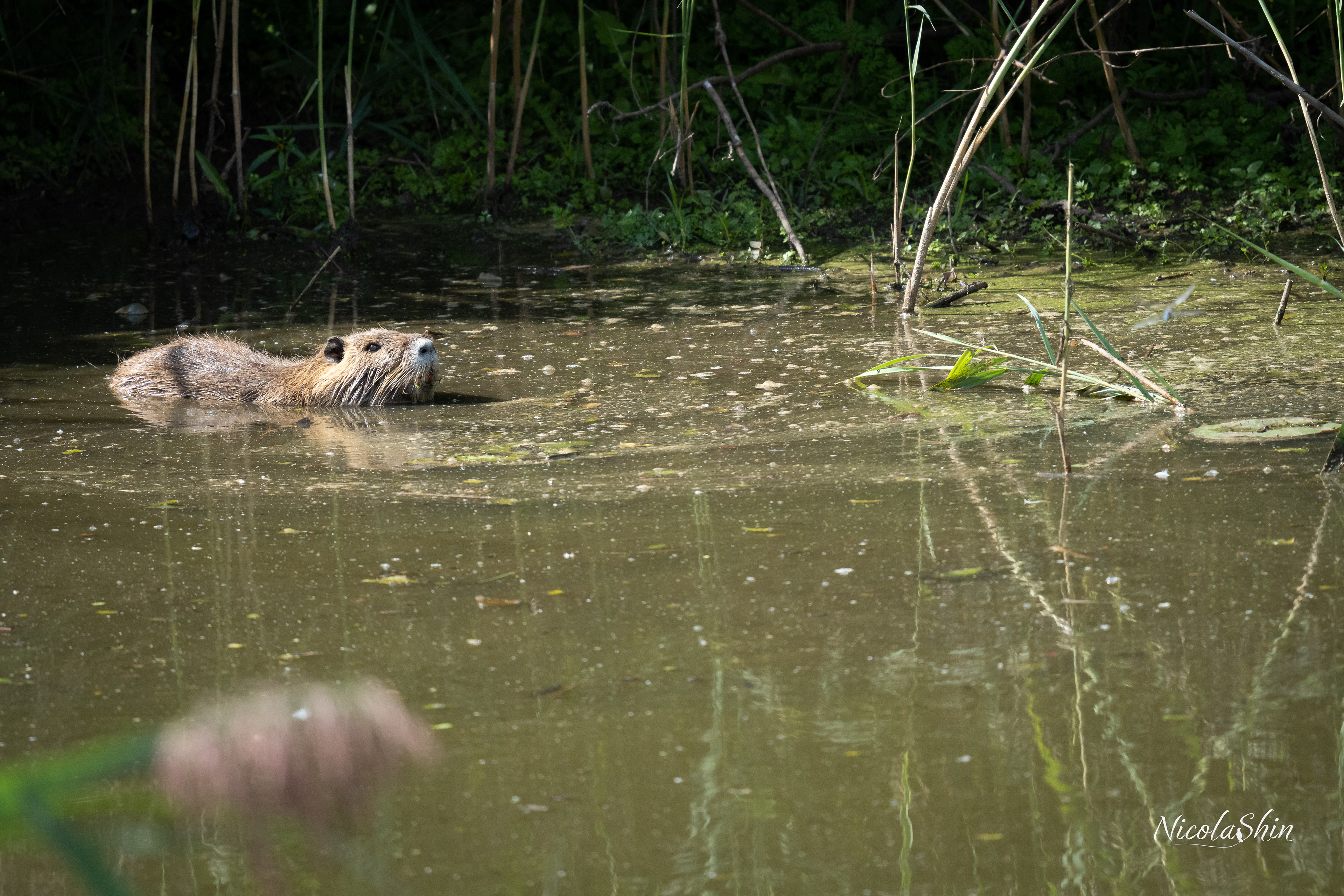
Where to shoot: The lake of Der, especially the birds hides, is a great place to watch birds. I would recommend stopping by the ponds west of the lake, particularly l'étang des landres. The place was less crowded and you could get closer to the wildlife.
It is also worth going to the forêt d'Orient and its lake (lac D'auzon-temple). There are nice hikes and a diverse range of wildlife. We spotted a black stork there.
Where to stay: We spent one night in the hotel le Tadorne to be close to the forest. It was a traditional old hotel, the lodging was authentic and the food was great.
